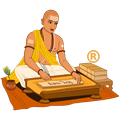 Drik Panchang
Drik Panchang



 Drik Panchang
Drik Panchang















Sunrise06:33 AM
Sunset04:44 PM
Moonrise08:59 AM
Moonset06:24 PM
Shaka Samvat1947 Vishvavasu
Vikram Samvat2082 Kalayukta
Gujarati Samvat2082 Pingala
Amanta MonthMargashirsha
Purnimanta MonthMargashirsha
WeekdayShaniwara
PakshaShukla Paksha
TithiTritiya upto 05:54 AM, Nov 23
NakshatraMula upto 05:58 AM, Nov 23
YogaDhriti upto 10:39 PM
KaranaTaitila upto 04:49 PM
KaranaGaraja upto 05:54 AM, Nov 23
Pravishte/Gate7
Rahu Kalam09:06 AM to 10:22 AM
Gulikai Kalam06:33 AM to 07:50 AM
Yamaganda12:55 PM to 02:11 PM
Abhijit11:18 AM to 11:59 AM
Dur Muhurtam06:33 AM to 07:14 AM
Dur Muhurtam07:14 AM to 07:55 AM
Amrit Kalam10:51 PM to 12:37 AM, Nov 23
Varjyam12:10 PM to 01:57 PM
Varjyam04:11 AM, Nov 23 to 05:58 AM, Nov 23
Notes: All timings are represented in 12-hour notation in local time of Lancaster, United States with DST adjustment (if applicable).
Hours which are past midnight are suffixed with next day date. In Panchang day starts and ends with sunrise.



 Dhanu 09:44
Dhanu 09:44 U Ashadha 28:59+
U Ashadha 28:59+

 Mesha
Mesha Ashwini 20:10
Ashwini 20:10

 Vrishabha
Vrishabha Krittika 13:58
Krittika 13:58

 Mithuna
Mithuna Mrigashira 08:32
Mrigashira 08:32

 Mithuna 23:32
Mithuna 23:32 Ardra 06:34
Ardra 06:34

 Karka
Karka Pushya 28:47+
Pushya 28:47+

 Simha
Simha Magha 30:08+
Magha 30:08+

 Simha
Simha P Phalguni
P Phalguni

 Simha 14:21
Simha 14:21 P Phalguni 07:50
P Phalguni 07:50

 Tula
Tula Chitra 15:31
Chitra 15:31

 Tula
Tula Swati 18:29
Swati 18:29

 Tula 14:44
Tula 14:44 Vishakha 21:28
Vishakha 21:28

 Dhanu
Dhanu Mula 29:58+
Mula 29:58+

 Dhanu
Dhanu P Ashadha
P Ashadha

 Dhanu 14:57
Dhanu 14:57 P Ashadha 08:23
P Ashadha 08:23

 Makara 24:37+
Makara 24:37+ Shravana 12:02
Shravana 12:02

 Kumbha
Kumbha Dhanishtha 13:02
Dhanishtha 13:02

 Kumbha
Kumbha Shatabhisha 13:19
Shatabhisha 13:19

 Kumbha 07:03
Kumbha 07:03 P Bhadrapada 12:52
P Bhadrapada 12:52In Hindu Calendar, the day starts with local sunrise and ends with next day local sunrise. As sunrise time is different for all cities, Hindu Calendar made for one city is not valid for any other city. Hence it is important to use location based Hindu Calendar, like this website. Further, each Hindu day consists of five elements, which are called angas. These five elements are -
In Hindu Calendar, all five elements together are called Panchang. (In Sanskrit: Panchang = Pancha (five) + Ang (part)). Hence Hindu Calendar which shows all five elements for each day is called Panchang. In South India Panchang is known as Panchangam.
When Hindu Calendar includes Muslims, Sikh, Christian, Buddhist and Jain festivals, including national holidays, it is called as Indian Calendar.